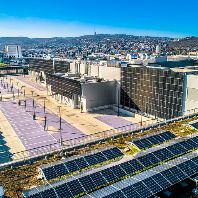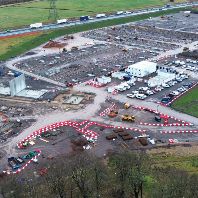Germany and Switzerland become the eighth and ninth European country to publish annual index results after the UK, Ireland, the Netherlands and the four Nordic countries IPD measures Sweden, Denmark, Finland, most recently, Norway.
Europe's two most unique property markets delivered historically consistent capital growth. Germany, Europe's largest real estate market, suffered its steepest capital depreciation for three years in 2009, albeit at a modest -2.6%, while Switzerland stretched to an eighth consecutive capital growth, also at a modest 70 basis points.
For different reasons these two property markets are unique. Germanic property performance is the product of 10 years of economic stagnation which has been the primary driver of low volatility. As a result, capital growth and total returns tend not suffer the volatility seen in other investment real estate markets.
While Switzerland adopts a similar methodology, capital growth is also naturally stabilized by limited asset supply and a dominant local pension and insurances fund investor base which take long-term positions in the market thereby creating genuine market stability.
Last year, German property capital depreciation was driven by a -2.9% fall in offices, which accounts for 43.7% of the Databank. The retail sector, the second-largest component covering 23.1%, fell by -2.9%.
The most significant market deterioration in 2009 came in the industrial sector which fell by -10.1% marking the first-ever double-digit annual sector capital depreciation in the IPD German Annual Index 14-year history. However, the influence would have been minimal on the all property average, given it represents only 5.9% of the Databank. The residential sector was the only sector to deliver capital appreciation last year, at 1.0%, and for the fourth consecutive year.
In Switzerland, the positive capital growth over last year was driven by the retail sector, which delivered 1.5% last year, followed by the residential and office sectors, at 0.6% and 0.4%, respectively. For the second consecutive year, the industrial sector delivered capital depreciation, at -1.0%.
Within the retail sector, shopping centers and 'retail major cities' both significantly outperformed the average annual capital growth, with 1.8% and 1.4%, respectively. The two segments are supported by stable yields, low vacancy rates due to limited stock, rental growth and strong domestic consumer spending. At the main market level, Switzerland's property market was supported by rental value growth across the three sectors, delivering an average of 1.7%
In Switzerland's residential sector, which accounts for 46.5% of the Databank, three of the six segments produced a higher than average capital growth; Lausanne, Geneva and Zurich delivered 1.1%, 0.9% and 0.8%, while Berne was one of the country's only three segments to deliver capital depreciation, at -0.6%. Capital growth in Basle and the rest of Switzerland was 0.6% and 0.4%, respectively.
Source: IPD















